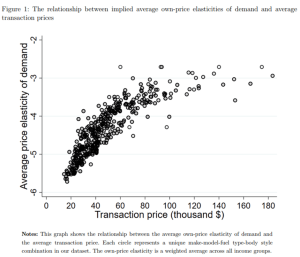Saving for retirement really does work better if it’s simple and automatic.
The widespread adoption of automatic enrollment and investment options has helped boost savings rates among all generations, and especially among younger workers who entered the workforce after these innovations were introduced, a new study from Vanguard has found.
Overall, U.S. workers directed nearly 40% more of their salary toward retirement savings in 2021 than they did in 2006, with employees across all generations saving more in 2021, the research showed.
The advent of automatic enrollment in employer-sponsored retirement plans and the rise of target-date funds have reshaped behavior among people in all generations, Vanguard said. Those initiatives have had the greatest impact on how younger workers — millennials and members of Generation Z — are saving for retirement.
“If the industry had never implemented these functions, we’d see very modest growth in savings. These innovations really leapfrogged retirement success,” said Dave Stinnett, head of strategic retirement consulting at Vanguard.
The Pension Protection Act, which Congress passed in 2006, increased the amount of money people could invest in their 401(k)s and allowed employers to automatically enroll workers in defined-contribution plans.
Between 2006 and 2021, participation rates rose dramatically among workers whose plans featured automatic enrollment. The total participation rate rose from 62% in 2001 to 82% in 2021 — but for plans with automatic enrollment, the participation rate rose even higher, to 94% in 2021. This was a reflection of the powerful effect of automatic enrollment on participation in retirement plans, Stinnett said.
“We expected to see growth, but the degree of the growth was eye-popping,” he said.
OPINION: Are you falling behind on retirement savings? It’s time to catch up.
With the creation of the 401(k) plan in 1987, baby boomers were the first generation to have access to such defined-contribution retirement plans for a meaningful portion of their careers. Meanwhile, millennials were the first generation to benefit from automatic enrollment and automatic-investment solutions during their early working years.
In 2021, 62% of Gen Z workers — who were between the ages of 18 and 24 in 2021 — participated in the retirement plans offered through their employers, up from 30% of people in that age range who did so in 2006. Their average deferral amount in 2021 was 5.4%, up from 4.8% in 2006.
Millennials — who were 25 to 40 years old in 2021 — experienced a similar increase in plan participation and savings rates. In 2021, 83% of millennials participated in their workplace plans, contributing an average of 6.7%. In 2006, the participation rate for people in that age range was 57% and the average deferral rate was 6.1%.
Although millennials have lived through two significant equity bear markets, their allocation to equities was higher in 2021 than in 2006 because they used target-date funds, Vanguard said.
Also read: 2023 has been rough so far. Use it as a wake-up call for your retirement planning.
“The youngest workers, having grown up in these financial crises, you might think that would spook them. But the data shows something entirely different — younger workers to a greater degree became bigger savers,” Stinnett said. “They are the first generation that has entered the workforce when these tools were in place and readily available. They are choosing not to opt out.”
In 2006, nearly one-quarter of participants ages 18 to 24 had no equity exposure. In 2021, 97% of automatically enrolled Gen Z participants had an equity allocation between 41% and 99%, Vanguard found.
“Retirement is very much a long game — you have 30, 40 years to reach that goal,” Stinnett said, noting that for those who start earlier, “retirement goals are easier to reach.”
April is National Financial Literacy Month. To mark the occasion, MarketWatch will publish a series of “Financial Fitness” articles to help readers improve their fiscal health, and offer advice on how to save, invest and spend their money wisely. Read more here.
This post was originally published on Market Watch






